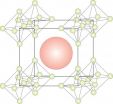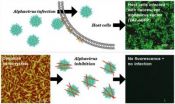(Press-News.org) After experiencing a tragic and truncated end to the 2013 Boston Marathon, race organizers were faced not only with grief but with hundreds of administrative decisions, including plans for the 2014 race – an event beloved by Bostonians and people around the world.
One of the issues they faced was what to do about the nearly 6,000 runners who were unable to complete the 2013 race. The Boston Athletic Association, the event's organizers, quickly pledged to provide official finish times for these runners. Thinking ahead, they also had to consider how to provide these runners with an opportunity to qualify for the 2014 race.
To seek advice on these issues, they contacted Richard Smith, a statistician and marathon runner at the University of North Carolina at Chapel Hill, and director of the Statistical and Applied Mathematics Sciences Institute (SAMSI) based in Research Triangle Park, N.C. They asked Smith to come up with a statistical procedure for predicting each runner's likely finish time based on their pace up to the last checkpoint before they had to stop.
"Once I got their email," said Smith, "of course I knew I had to help them." Smith already knew the organizers, as a result of a previous occasion when he provided advice related to the event's qualifying times.
Smith quickly assembled a team of fellow analysts that included Francesca Dominici and Giovanni Parmigiani at Harvard School of Public Health, and Dorit Hammerling, postdoctoral fellow at SAMSI, who were in the 2013 race and finished uninjured. The team also included Matthew Cefalu, Harvard School of Public Health; Jessi Cisewski, Carnegie Mellon University and Charles Paulson, Puffinware LLC.
The results, and the method the researchers developed, were published in the April 11 edition of PLOS ONE.
With the help of the Boston Athletic Association, the researchers created a dataset consisting of all the runners in the 2013 race who reached the halfway point but failed to finish, and all the runners from the 2010 and 2011 Boston marathons. The data consist of "split times" from each of the 5 km sections of the course (from the start up to 40 km), and the final 2.2 km. The research team was tasked to predict the missing split times for the runners who failed to finish in 2013.
The researchers adapted techniques used in such contexts as computing missing data in DNA microarray experiments and estimating ratings which Netflix subscribers would have given to movies they had not seen. They proposed five prediction methods and created a validation dataset to measure the runners' performance by mean squared error and other measures. Of the five, the method that worked best used local regression based on a K-nearest-neighbors algorithm (KNN method), though several other methods produced results of similar quality.
The KNN method looks at each of the runners who did not complete the race (DNF) and finds a set of comparison runners who finished the race in 2010 and 2011 whose split times were similar to the DNF runner up to the point where he or she left the race. These runners are called "nearest neighbors."
"We had to come up with a method to compare the runners based on the split points up to a certain point of the race and then had to decide how many of the nearest neighbors to examine in order to develop a prediction for the DNF runner that would be based on the different finishing times of these nearest neighbors," said Smith, who has run the Boston Marathon in the past and will run this year's race. "We decided to choose 200 nearest neighbors. We also tried 100 and 300 nearest neighbors, but the results changed only slightly and didn't make them better."
The Boston Athletic Association decided to grant entry to the 2014 race to anyone who was stopped from completing the 2013 event, so they will have a chance to complete the Boston Marathon after all. But in the course of developing the method, Smith and his colleagues realized there were other uses for the technique.
"We have found that using the KNN method looking at a runner's intermediate split-time will also be useful in predicting the person's completion time while the race is in progress," said Smith. "This can be helpful for relatives and friends to be able to meet the person at the finish line."
INFORMATION:
Link to the paper: http://dx.plos.org/10.1371/journal.pone.0093800
UNC College of Arts & Sciences contact: Dee Reid, (919) 843-6339, deereid@unc.edu
SAMSI contact: Jamie Nunnelly, (919) 685-9319, nunnelly@niss.org
Harvard School of Public Health contact: Todd Datz, (617) 432-8413, tdatz@hsph.harvard.edu
UNC News Services contact: Thania Benios, (919) 962-8596, thania_benios@unc.edu
Researchers help Boston Marathon organizers plan for 2014 race
2014-04-15
ELSE PRESS RELEASES FROM THIS DATE:
Bizarre parasite may provide cuttlefish clues
2014-04-15
University of Adelaide research into parasites of cuttlefish, squid and octopus has uncovered details of the parasites' astonishing life cycles, and shown how they may help in investigating populations of their hosts.
Researcher Dr Sarah Catalano has described 10 new parasite species− dicyemid mesozoans −, which live in the kidneys of cephalopods (cuttlefish, squid and octopus). They are the very first dicyemid species to be described from Australian waters.
"Although dicyemid parasites have been studied by other groups, nothing has been known about dicyemid ...
In child custody disputes, LGBT parents face bias in the courts, new Drexel review finds
2014-04-15
Court decisions that favor a heterosexual parent over a gay or lesbian parent in a custody dispute often do not consider important social science research on parenting by gay and lesbian individuals, according to a new review from Drexel University.
Previous research shows that gay and lesbian individuals are as effective in parenting as heterosexuals, and that children raised by gay or lesbian parents are as well-adjusted as their peers raised by heterosexual parents. This research could greatly impact how legislatures and courts make decisions regarding custody for ...
Engineers develop new materials for hydrogen storage
2014-04-15
Engineers at the University of California, San Diego, have created new ceramic materials that could be used to store hydrogen safely and efficiently.
The researchers have created for the first time compounds made from mixtures of calcium hexaboride, strontium and barium hexaboride. They also have demonstrated that the compounds could be manufactured using a simple, low-cost manufacturing method known as combustion synthesis.
The work is at the proof of concept stage and is part of a $1.2 million project funded by the National Science Foundation, a collaboration between ...
Eating rice boosts diet quality, reduces body weight and improves markers for health
2014-04-15
ARLINGTON VA, April 15, 2014 – New research, partially funded by the U.S. Department of Agriculture and the USA Rice Federation, shows that consumers can improve their diets simply by enjoying white or brown rice as part of their daily meals.
In a study published online in the peer-reviewed journal Food and Nutrition Sciences, lead author Theresa Nicklas, DrPH, of Baylor College of Medicine, analyzed the National Health and Nutrition Examination Survey datasets from 2005-2010 and evaluated the association of rice consumption with overall diet quality and key nutrient ...
Whooping cough bacterium evolves in Australia
2014-04-15
The bacterium that causes whooping cough, Bordetella pertussis, has changed in Australia - most likely in response to the vaccine used to prevent the disease - with a possible reduced effectiveness of the vaccine as a result, a new study shows.
A UNSW-led team of researchers analysed strains of Bordetella pertussis from across Australia and found that many strains no longer produce a key surface protein called pertactin.
About 80 per cent of the 2012 whooping cough cases in Australia studied by the team were caused by pertactin-free strains.
Pertactin is one of the ...
Outcome of stroke worse for people with infection
2014-04-15
Infection is bad news for all of us - but it can be really serious to people who have had a stroke. Evidence is mounting that infection makes things much worse after a stroke.
A team of scientists at the University of Manchester has now found a key to why and how infection is such a bad thing for stroke sufferers
In the research published today in the medical journal Annals of Neurology, the researchers show that rodents with pneumonia fared worse after having a stroke than those without the bacterial infection.
When people get an infection their natural defences ...
Rising demand for herbal medicine can increase cultivation of medicinal trees
2014-04-15
NAIROBI, Kenya (9 April 2014) -----Formalizing trade in herbal medicinal products has the potential to increase the demand for on-farm grown raw material and raise the level of cultivation of medicinal tree species in smallholder farms.
A study carried out by the World Agroforestry Centre (ICRAF) in Kenya shows that trade in herbal medicinal products is rising in the urban areas and formalization in terms of better hygienic packaging and labeling of the products is likely to increase cultivation of these tree species.
Traditional medicine is practiced in in many rural ...
Nanocrystalline cellulose modified into an efficient viral inhibitor
2014-04-15
There are many viral diseases in the world for which no pharmaceutical treatment exists. These include, among others, dengue fever, which is spread by mosquitoes in the tropics, as well as a type of diarrhea, which is more familiar in Finland and is easily spread by the hands and can be dangerous especially for small children and the elderly.
Researchers at Aalto University and the University of Eastern Finland have now succeeded in preliminary tests to prevent the spread of one type of virus into cells with the help of a new type of nanocrystalline cellulose. Nano-sized ...
Community-based HIV prevention can boost testing, help reduce new infections
2014-04-15
Communities in Africa and Thailand that worked together on HIV-prevention efforts saw not only a rise in HIV screening but a drop in new infections, according to a new study in the peer-reviewed journal The Lancet Global Health.
The U.S. National Institute of Mental Health's Project Accept — a trial conducted by the HIV Prevention Trials Network to test a combination of social, behavioral and structural HIV-prevention interventions — demonstrated that a series of community efforts boosted the number of people tested for HIV and resulted in a 14 percent reduction in ...
New meta-analysis builds on the power of whey protein for improved body composition
2014-04-15
Rosemont, IL (April 15, 2014) – New research published in the March/April 2014 issue of the Journal of the American College of Nutrition shows whey protein, either as a supplement combined with resistance exercise or as part of a weight-loss or weight-maintenance diet, may provide men and women benefits related to body composition.
The meta-analysis included 14 randomized controlled trials with a total of 626 adult participants. When researchers analyzed those weight loss studies that used whey protein to replace calories in the diet, participants had a decrease in ...


